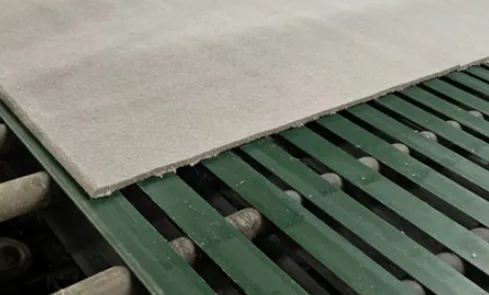8 月 . 31, 2024 02:58 Back to list
Difference Between Gypsum and PVC Ceiling | Pros & Cons
Understanding the Differences Between Gypsum and PVC Ceilings
When it comes to choosing a ceiling material for your home or commercial space, two popular options are gypsum and PVC (polyvinyl chloride) ceilings. Both materials have their own unique features, advantages, and drawbacks, making them suitable for different applications based on specific needs and preferences.
Composition and Structure
Gypsum ceilings are made from gypsum board, which is a panel consisting of a core of gypsum (calcium sulfate dihydrate) sandwiched between two layers of durable paper or fiberglass mat. This material is known for its fire resistance and sound insulation properties. In contrast, PVC ceilings are made from synthetic plastic, often produced in various designs, colors, and patterns. They are lightweight and flexible, making them easy to install.
Durability and Maintenance
One of the significant differences between the two materials is their durability. Gypsum ceilings are robust and can withstand certain impacts, but they are susceptible to water damage, which may lead to sagging or mold growth if not properly maintained. Conversely, PVC ceilings are highly resistant to moisture, making them ideal for areas with high humidity, such as bathrooms and kitchens. They are easy to clean, requiring minimal maintenance; a simple wipe with a damp cloth often suffices to keep them looking fresh.
difference between gypsum and pvc ceiling

Aesthetic Appeal and Design Flexibility
When it comes to aesthetics, both gypsum and PVC ceilings offer a range of designs. Gypsum boards can be painted or textured, providing a seamless look that can complement various interior styles. On the other hand, PVC ceilings are available in an extensive array of colors, patterns, and styles, including glossy and matte finishes, allowing for greater customization and design flexibility.
Cost Considerations
Cost is another crucial factor in choosing between gypsum and PVC ceilings. Generally, gypsum ceilings can be more expensive, not only in terms of material costs but also due to the installation process, which may require professional assistance. In contrast, PVC ceilings tend to be more budget-friendly, both regarding materials and installation, as they can often be installed as a DIY project.
Conclusion
In summary, while both gypsum and PVC ceilings offer distinct advantages, the choice ultimately depends on the specific needs of your space, including factors such as moisture levels, maintenance preferences, aesthetic goals, and budget. By understanding the differences between these materials, you can make an informed decision that enhances your interior while providing the longevity and functionality you desire.
-
Revolutionizing Interior Design with Ceilings t grid Suspended SystemNewsOct.29,2024
-
Revolutionizing Ceiling Design with ceiling access panel with Gypsum Tile WaterproofNewsOct.29,2024
-
Revolutionizing Interior Design with PVC Gypsum Ceiling: A Comprehensive GuideNewsOct.29,2024
-
Elevating Interior Design with High quality Mineral Fiber Ceiling TilesNewsOct.29,2024
-
Revolutionizing Interior Design with PVC Gypsum Ceiling: A Comprehensive GuideNewsOct.29,2024
-
Elevating Interior Design with High-Quality Mineral Fiber Ceiling Tiles: A Comprehensive GuideNewsOct.29,2024







